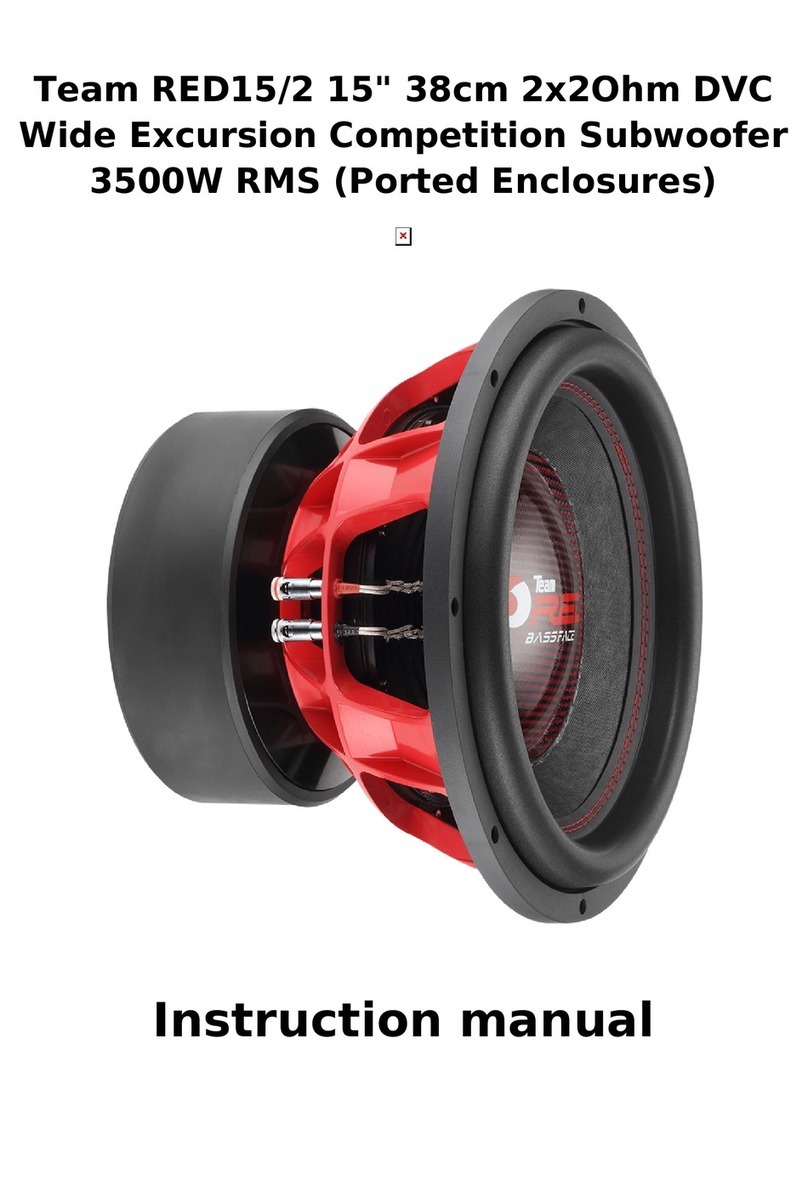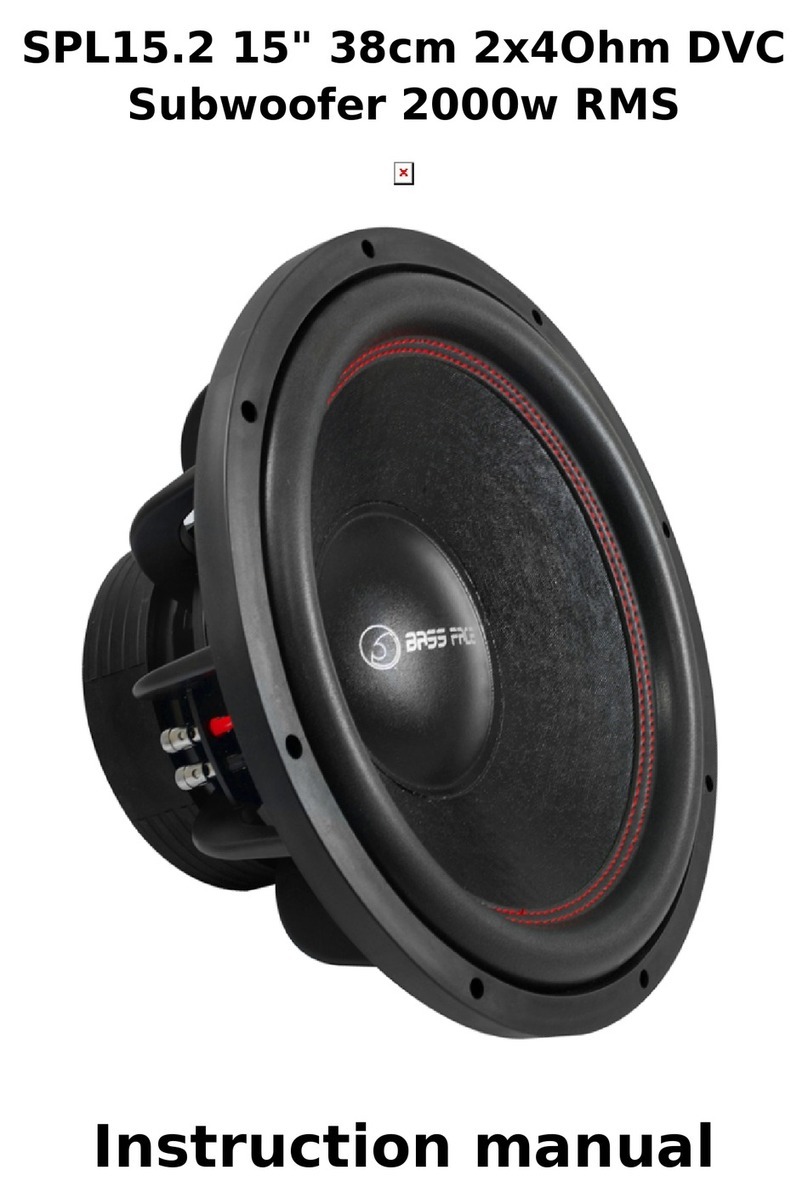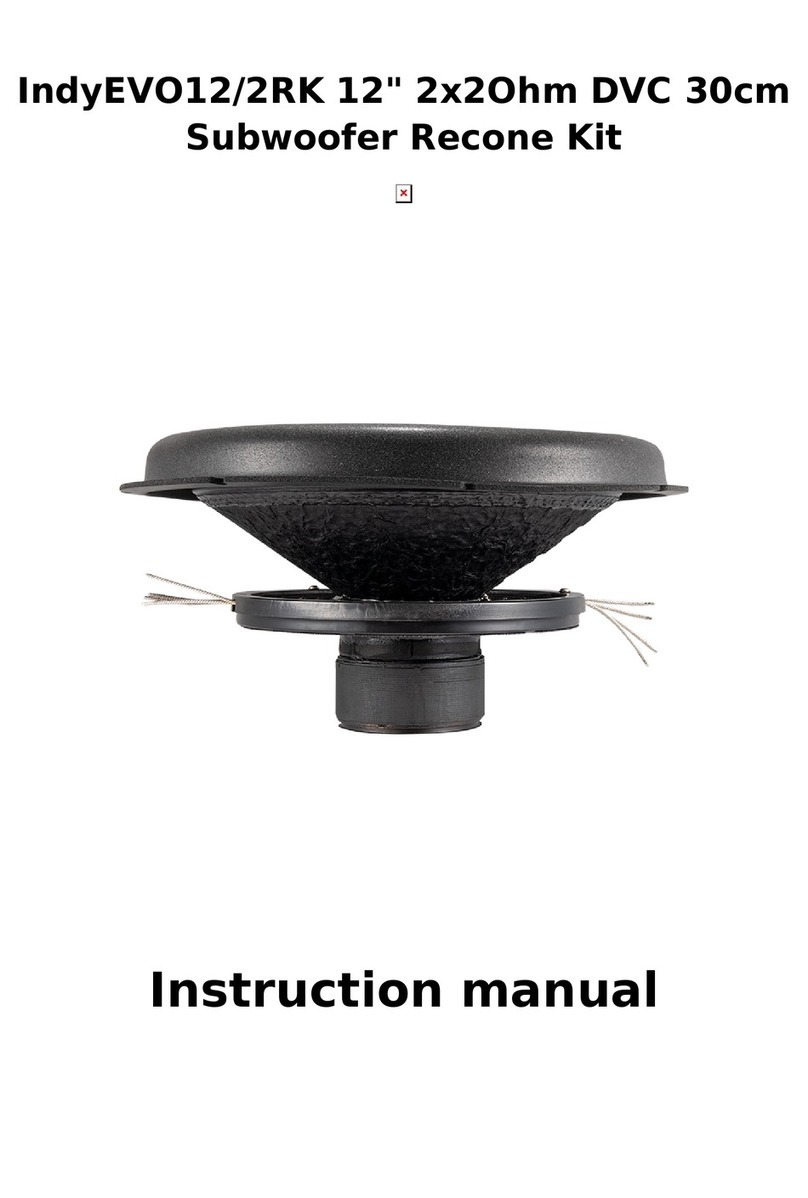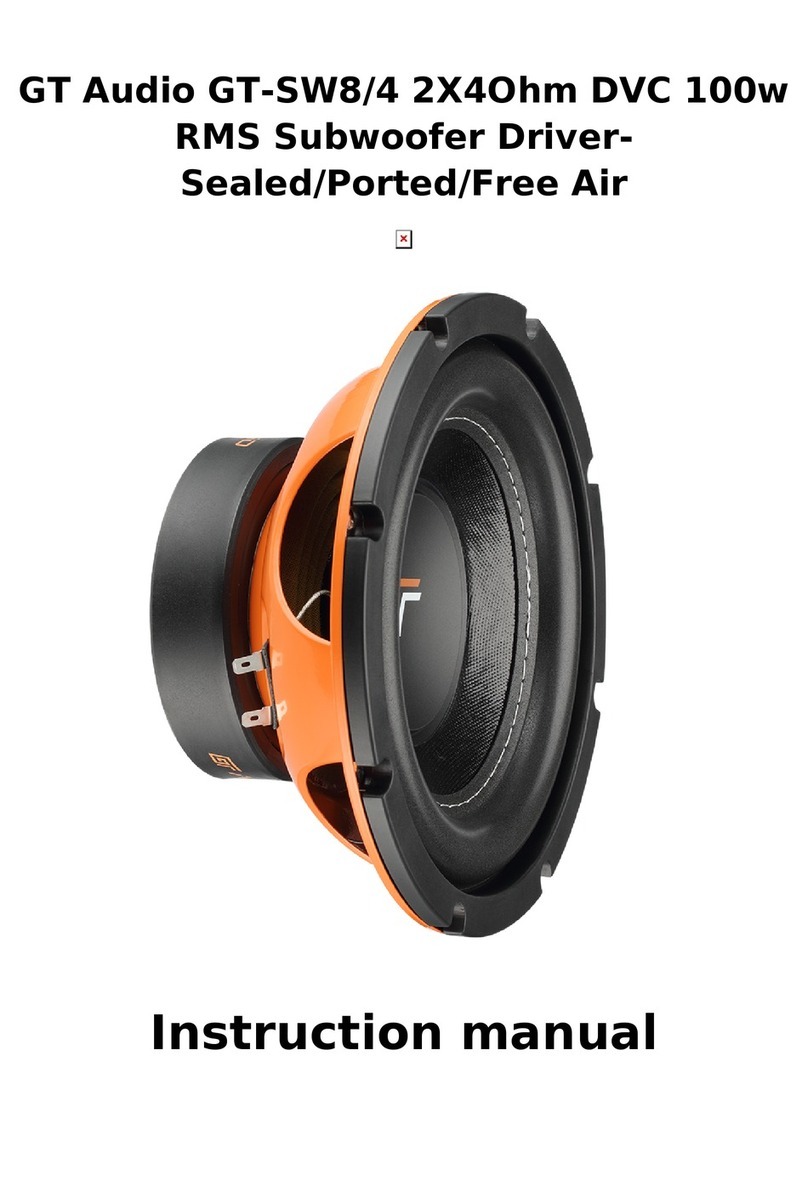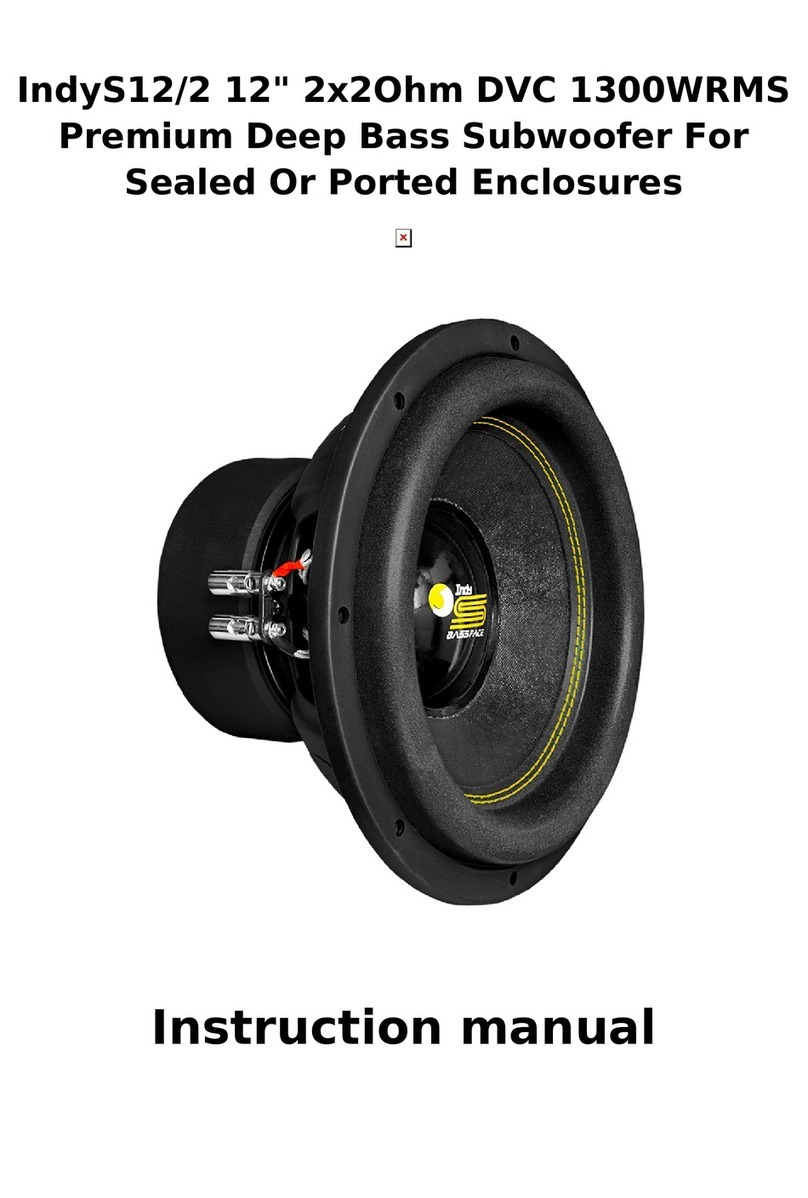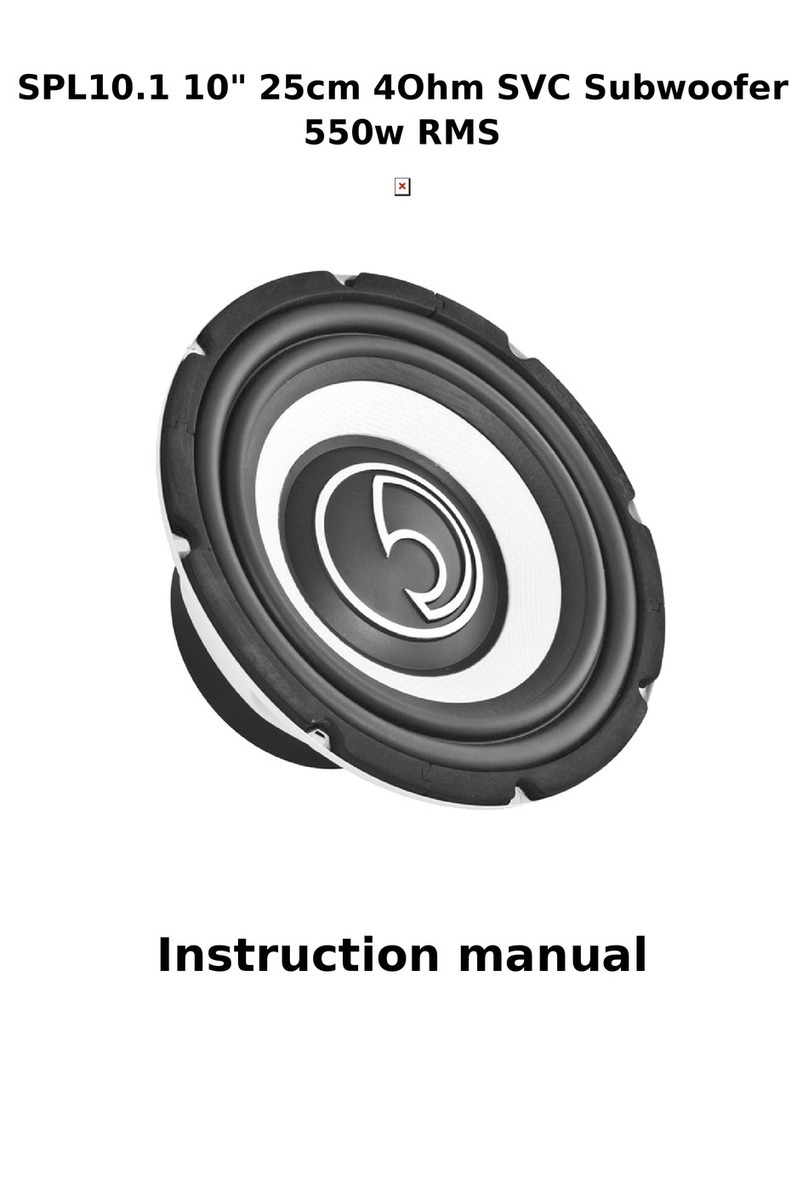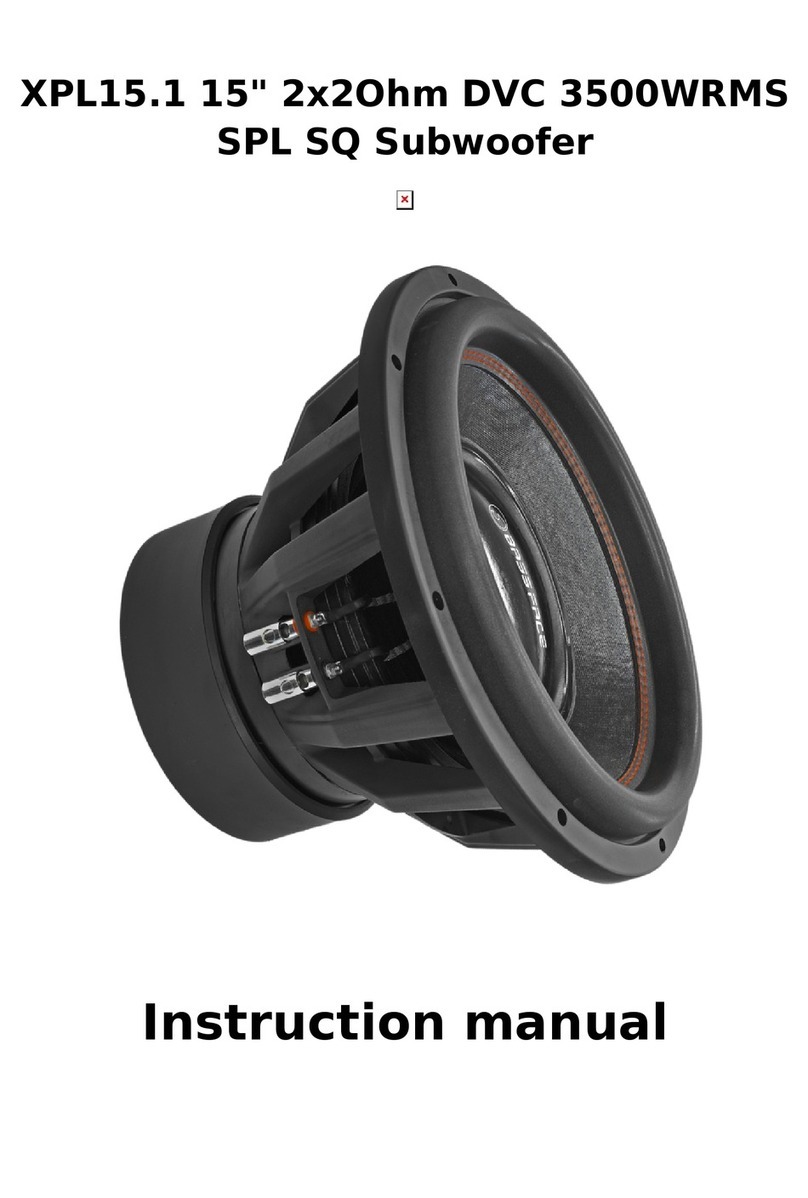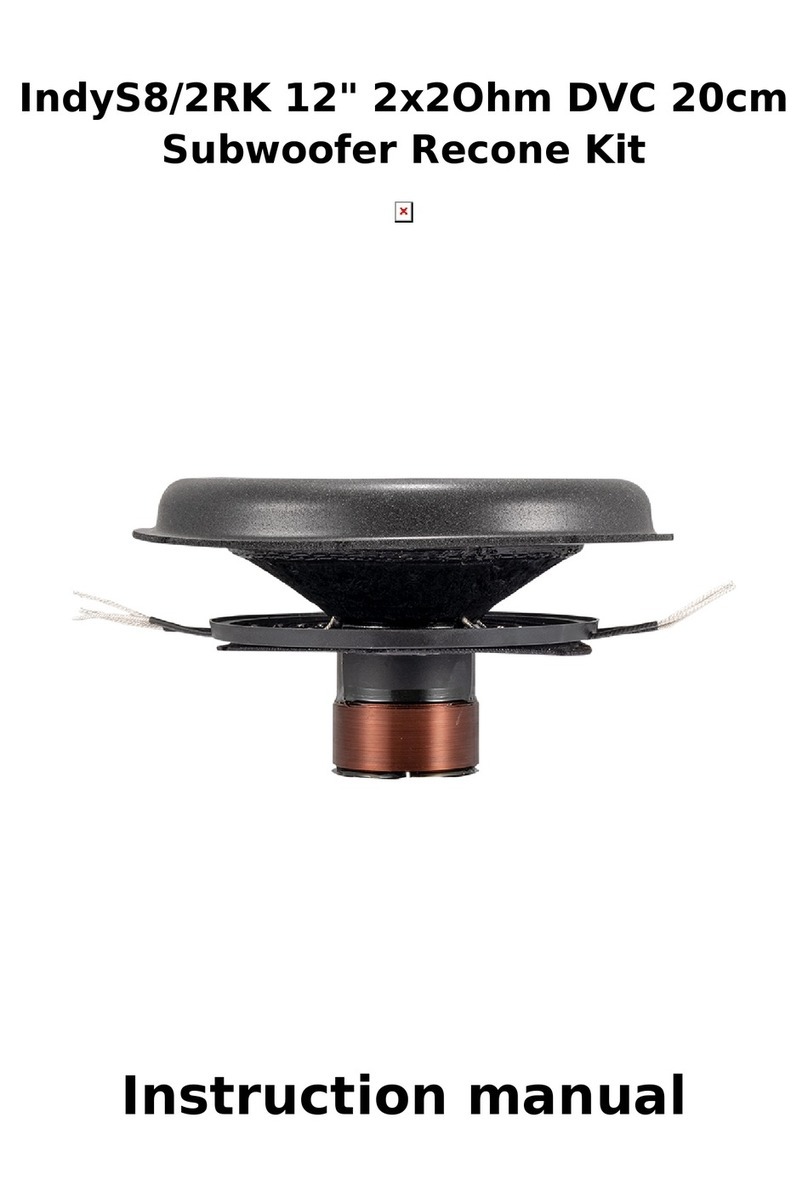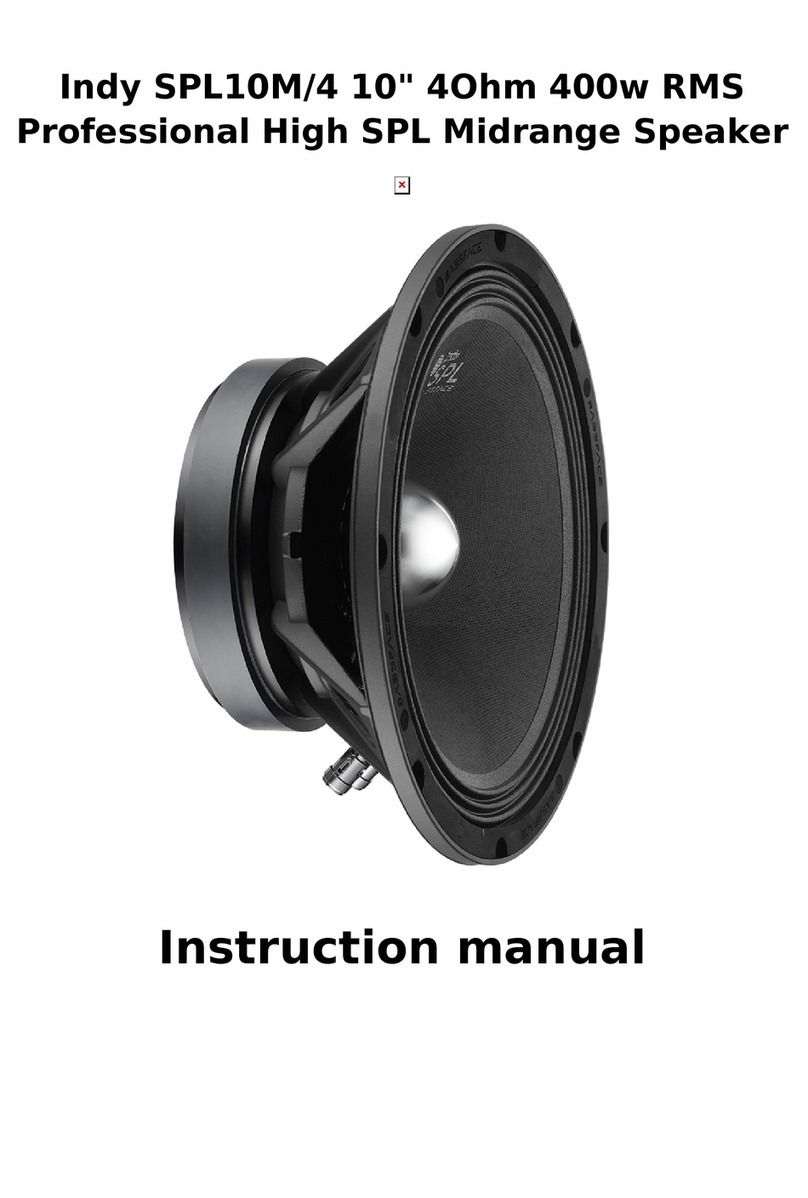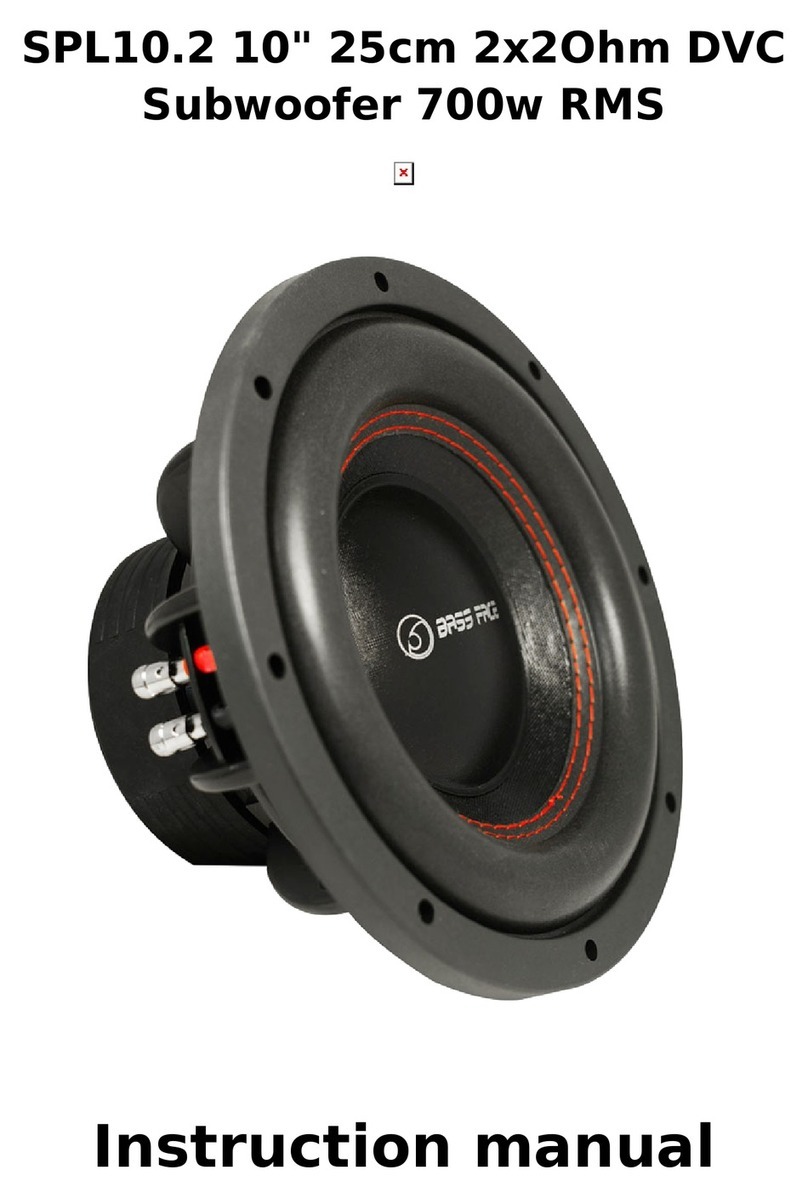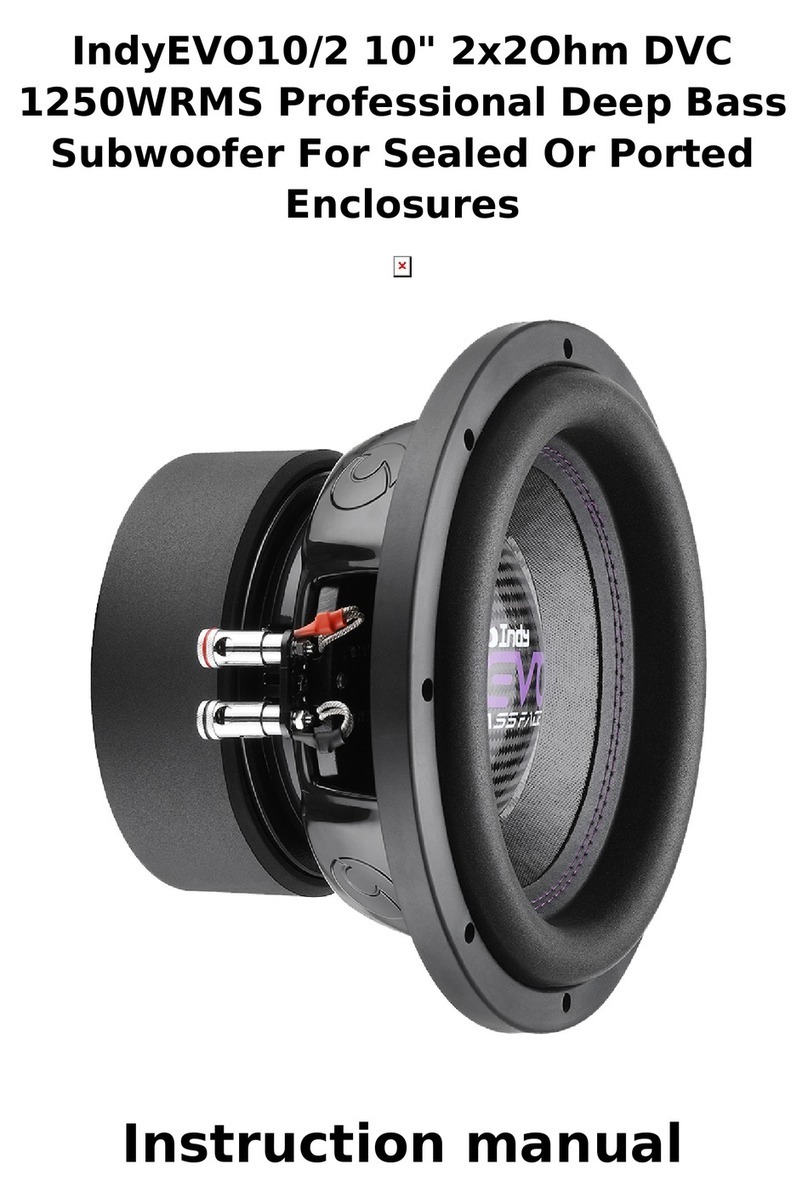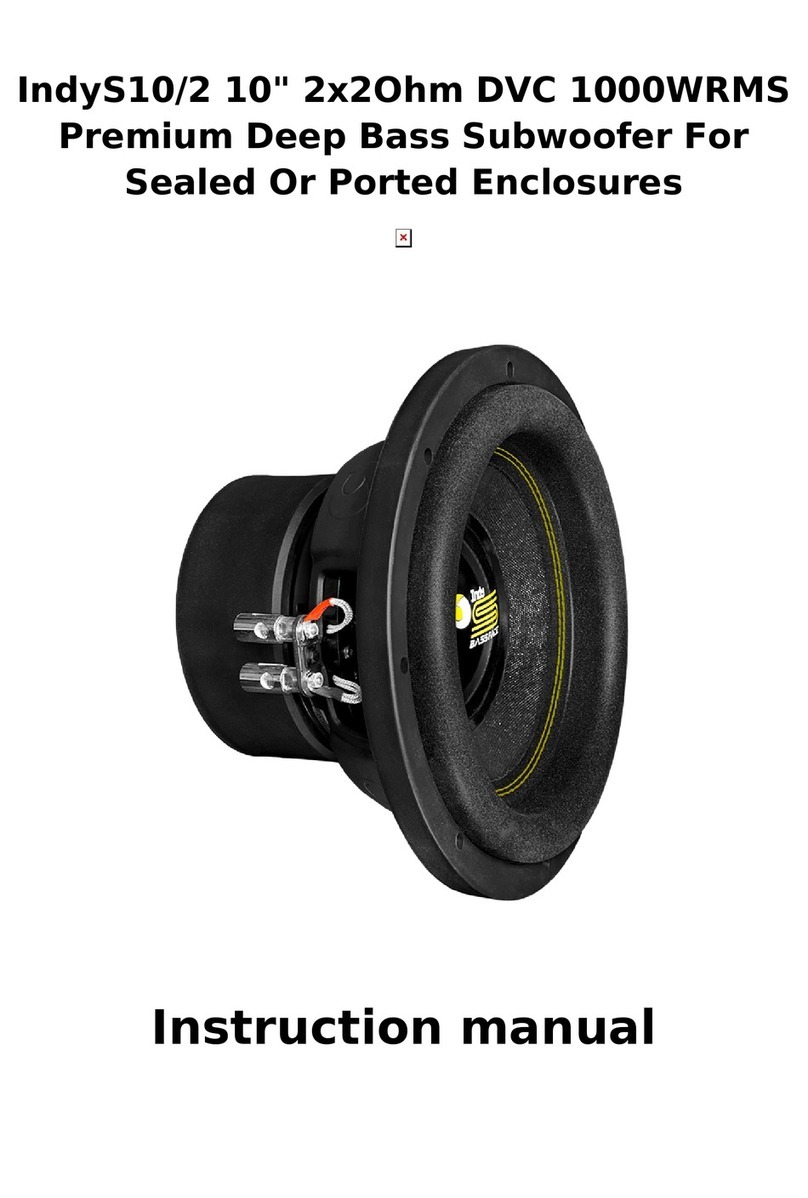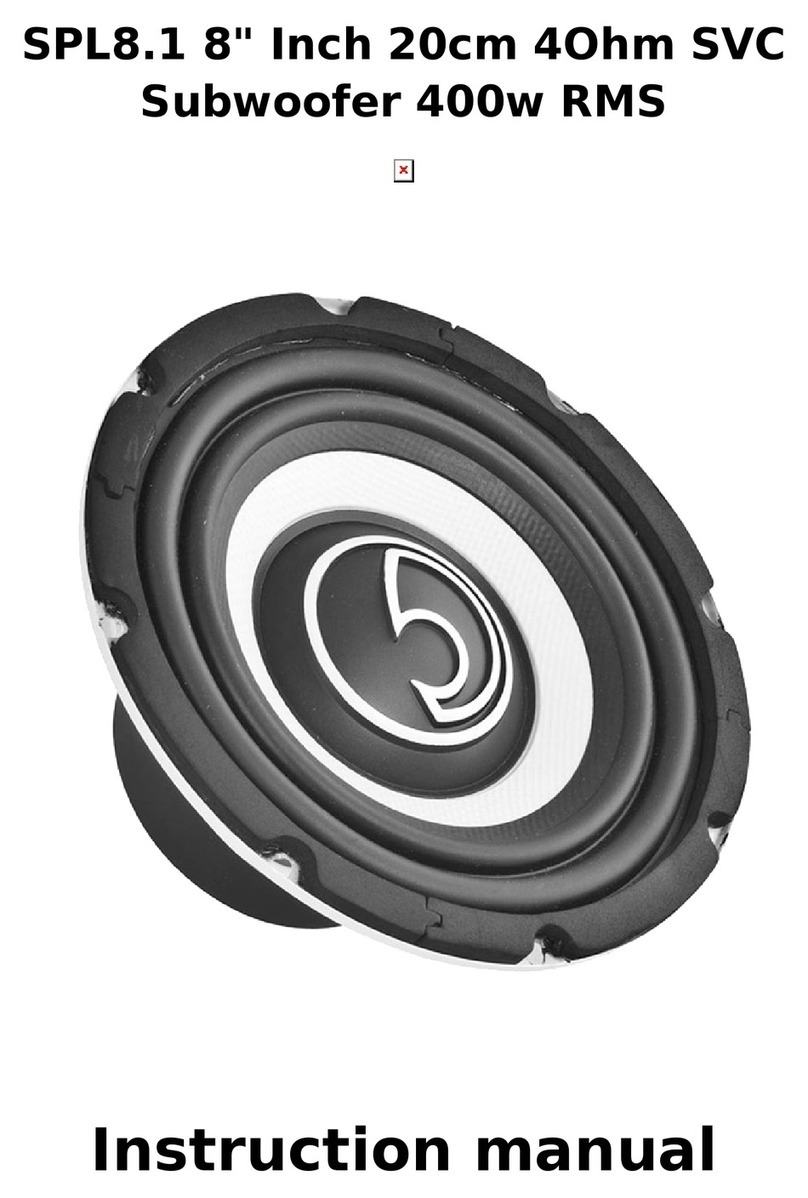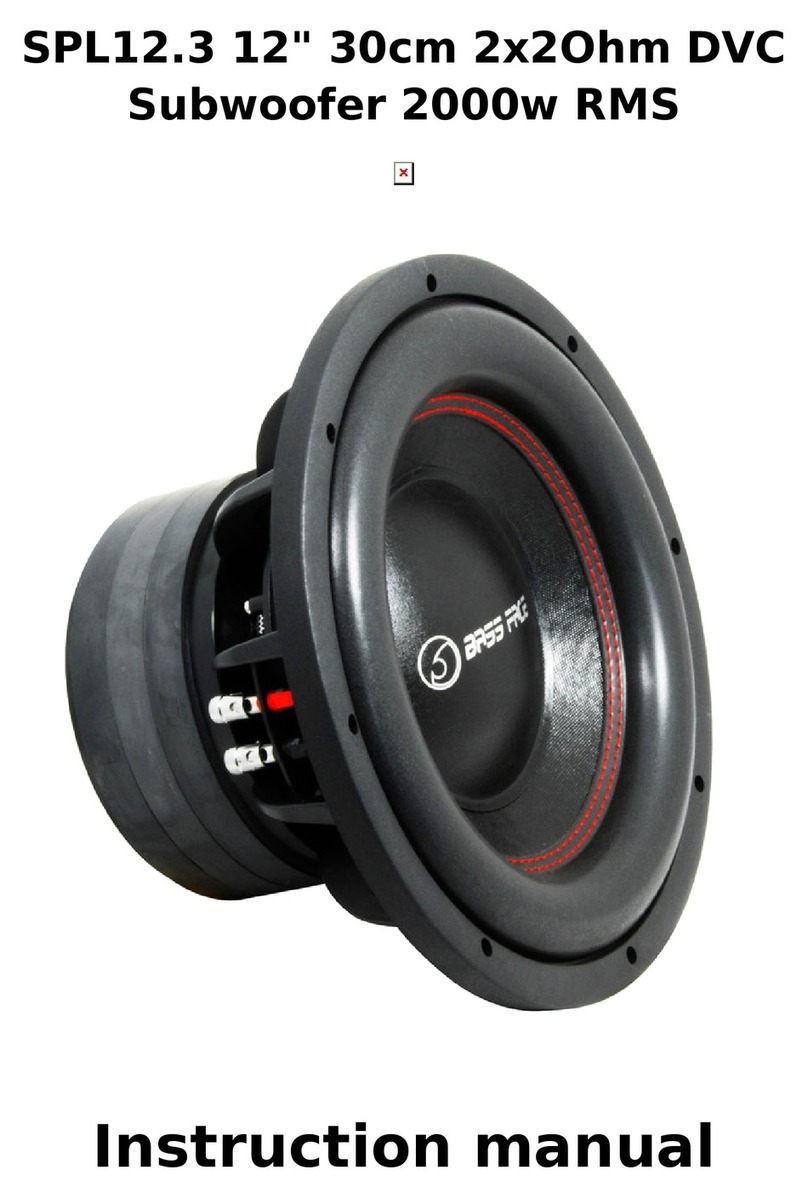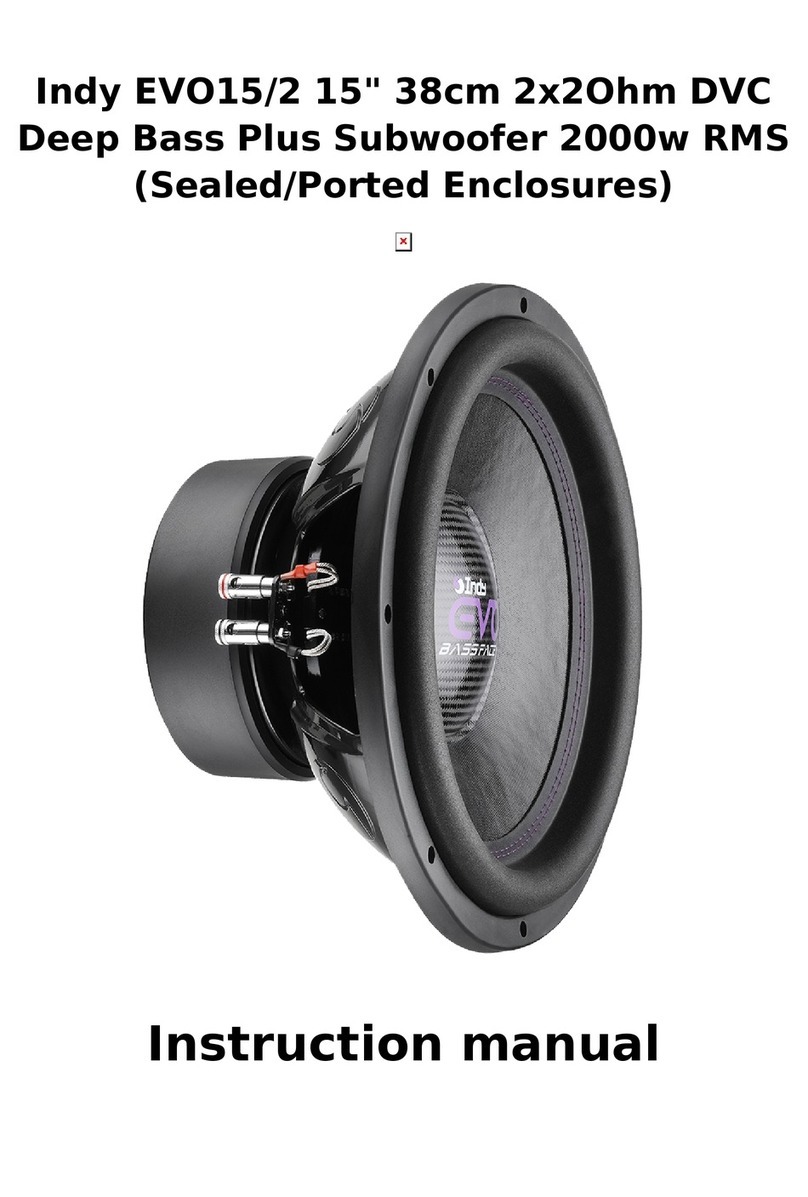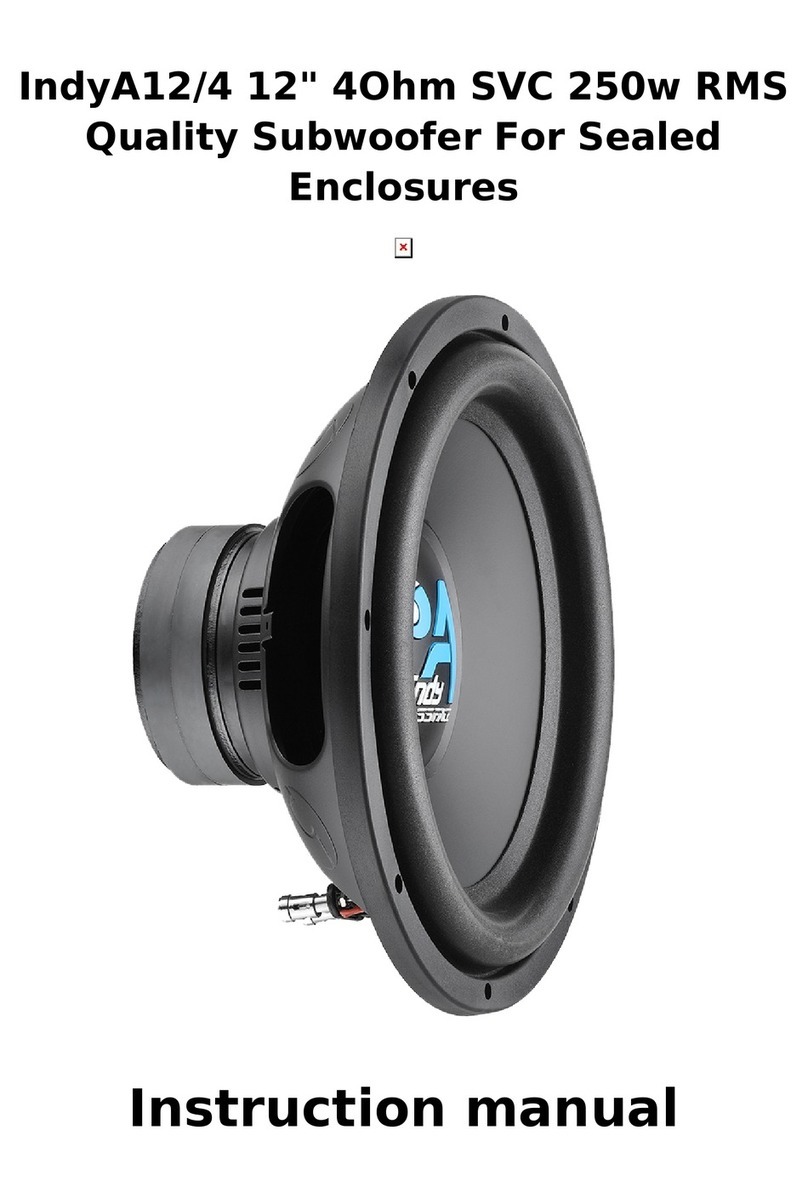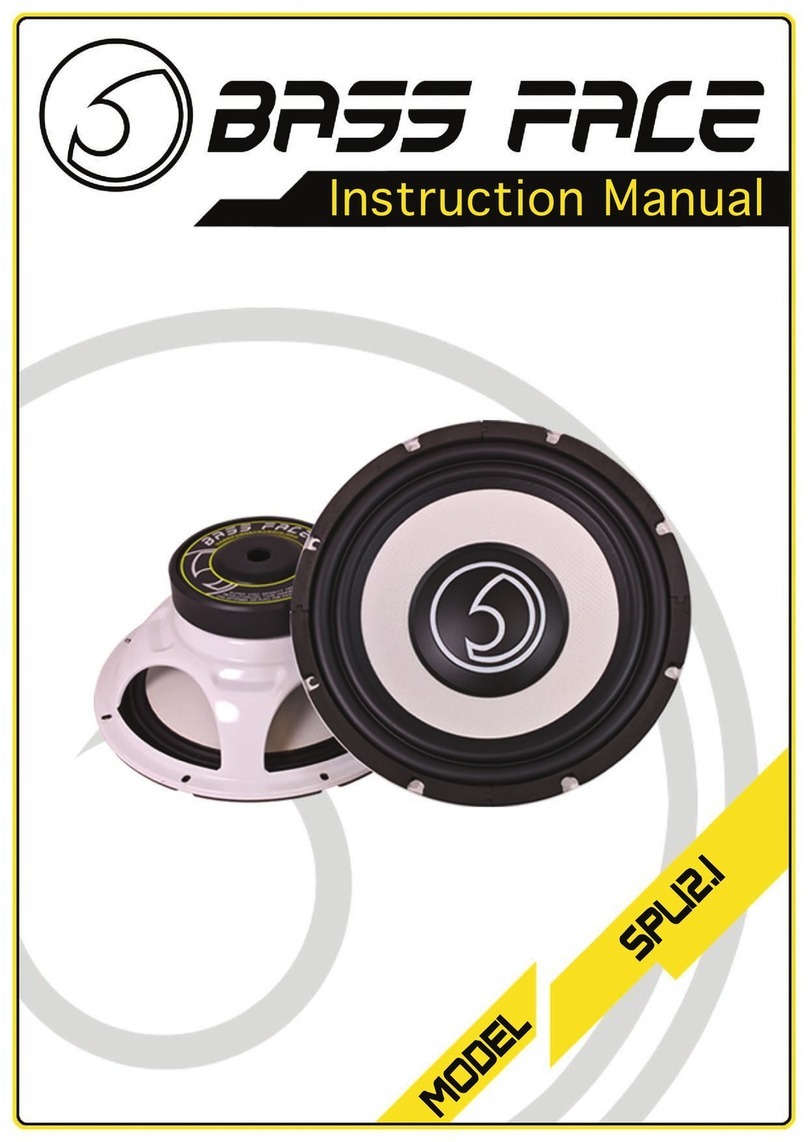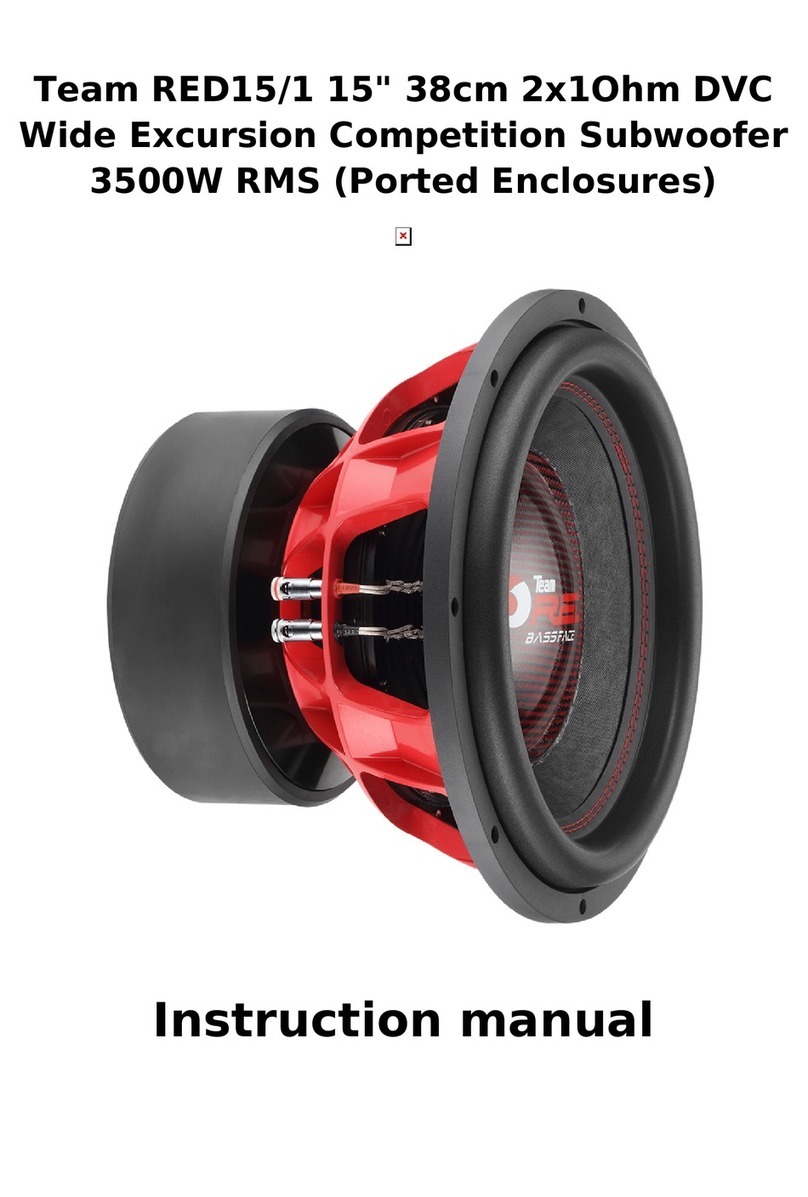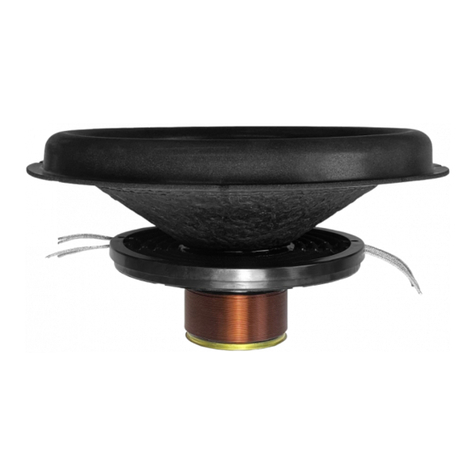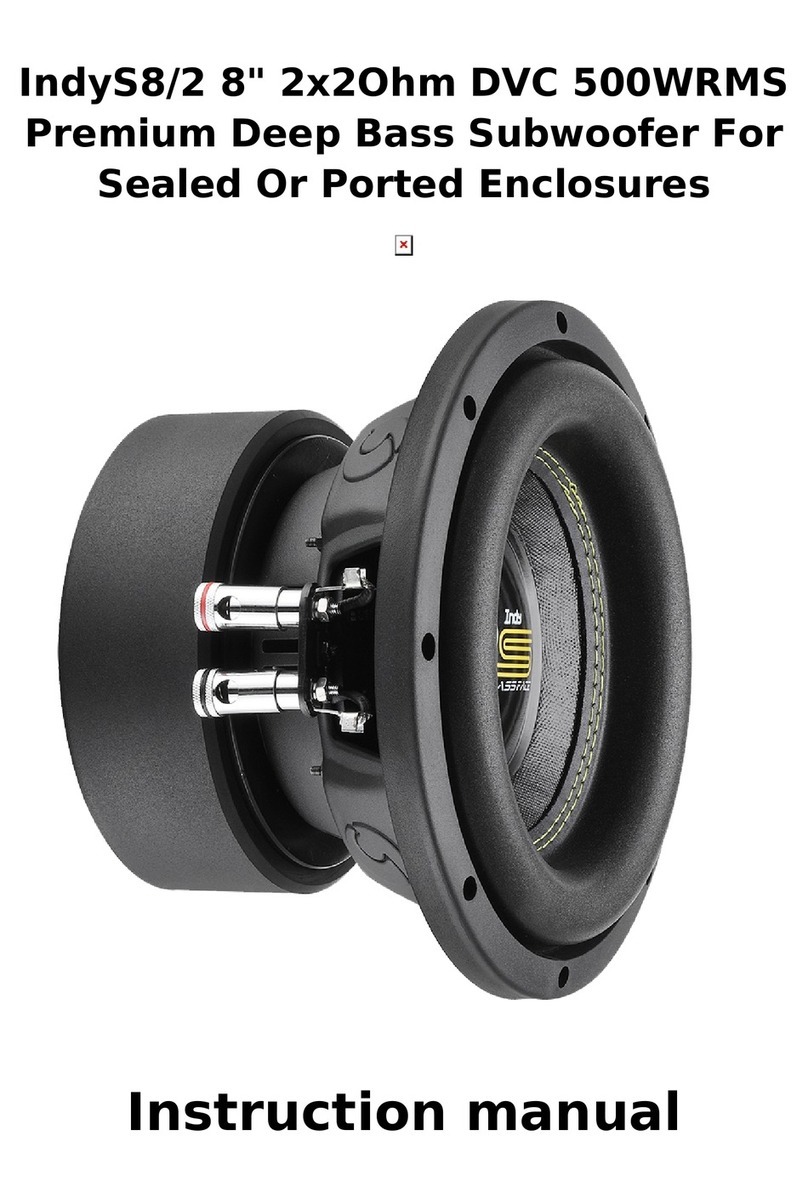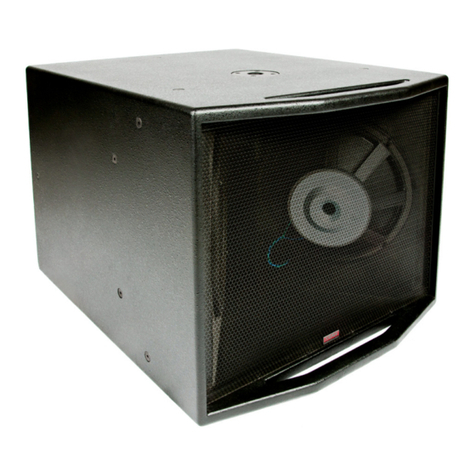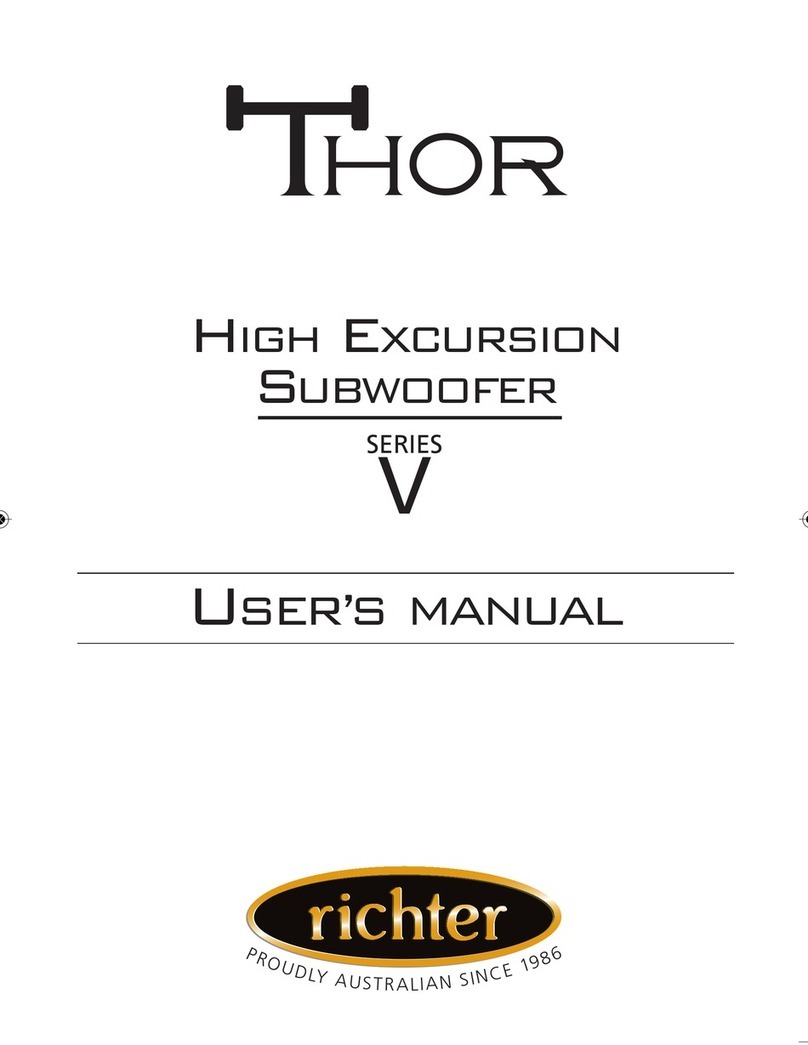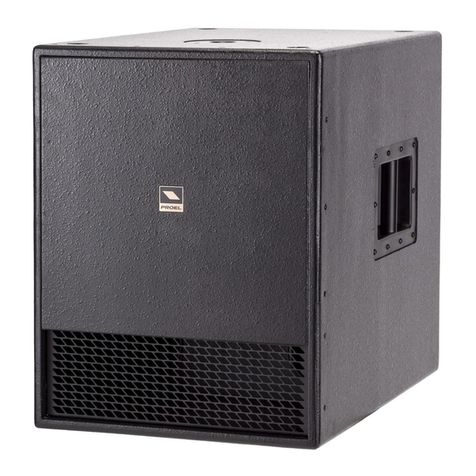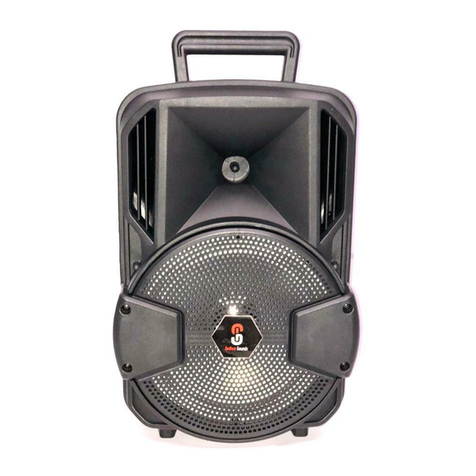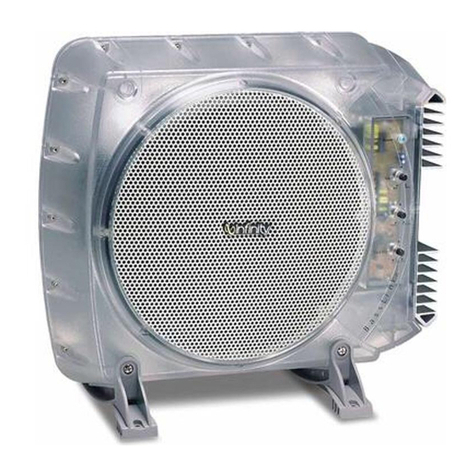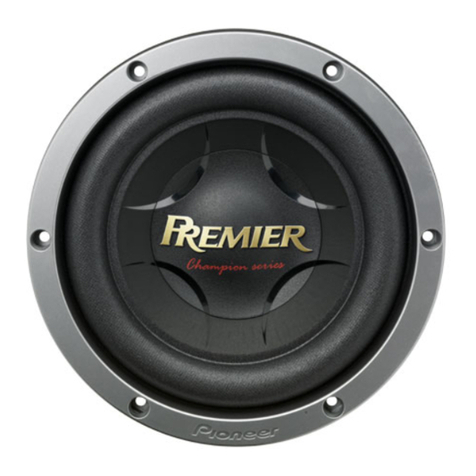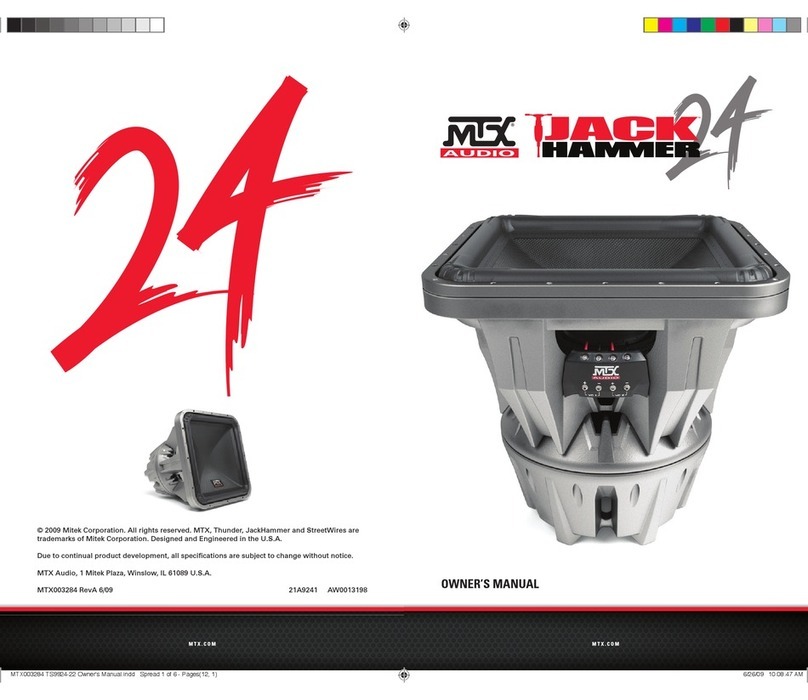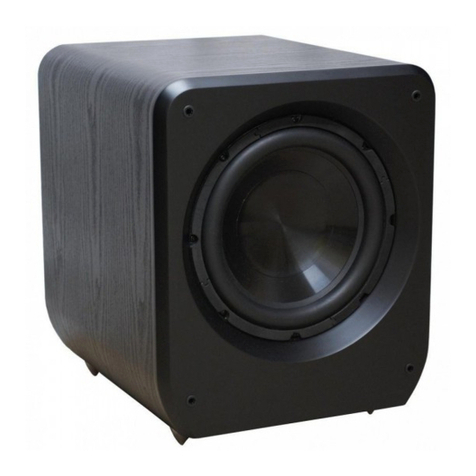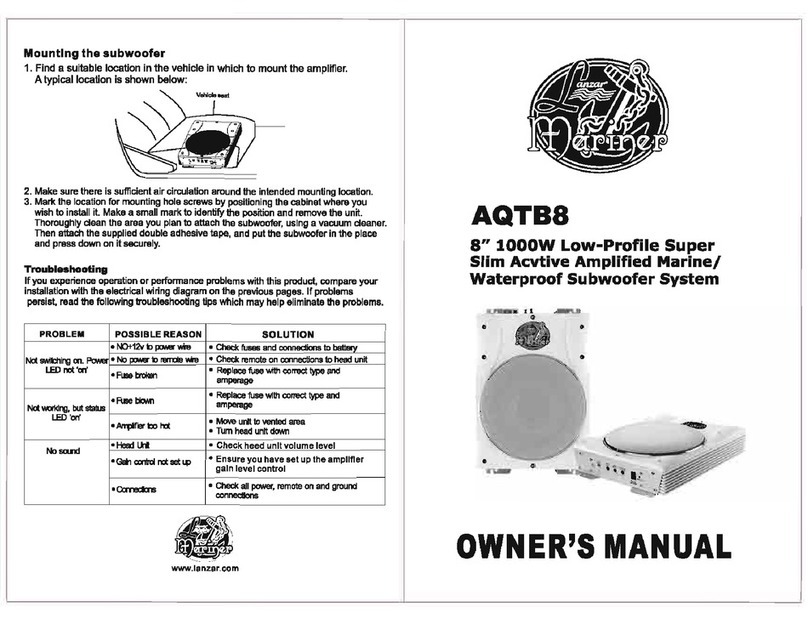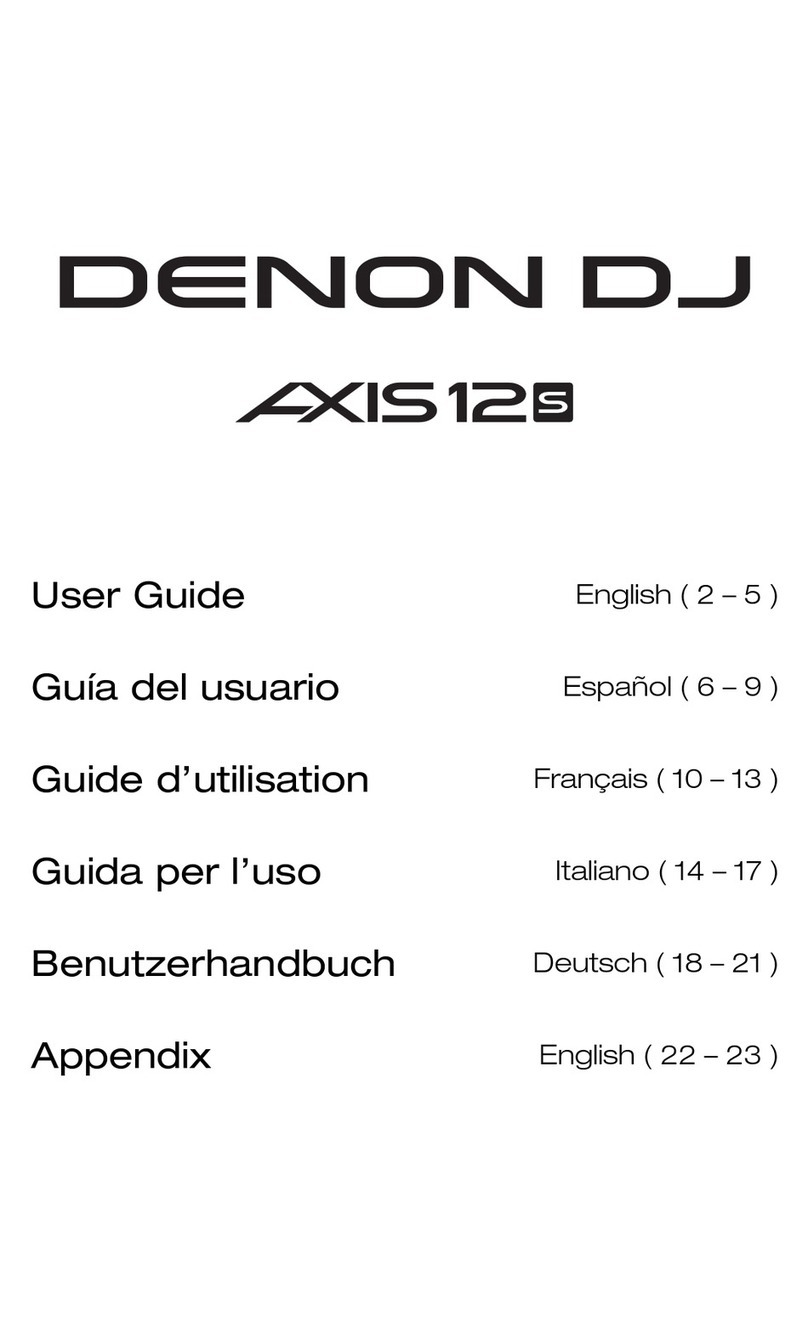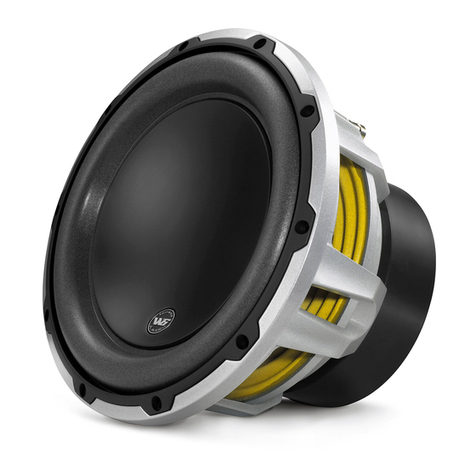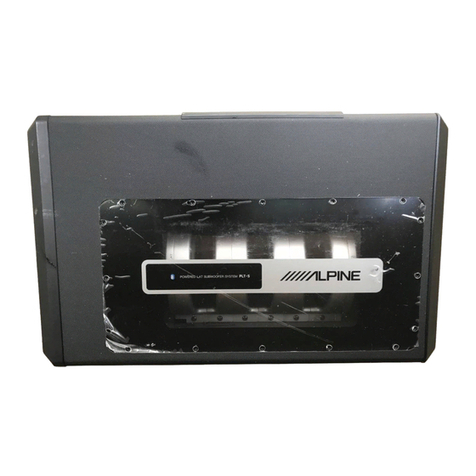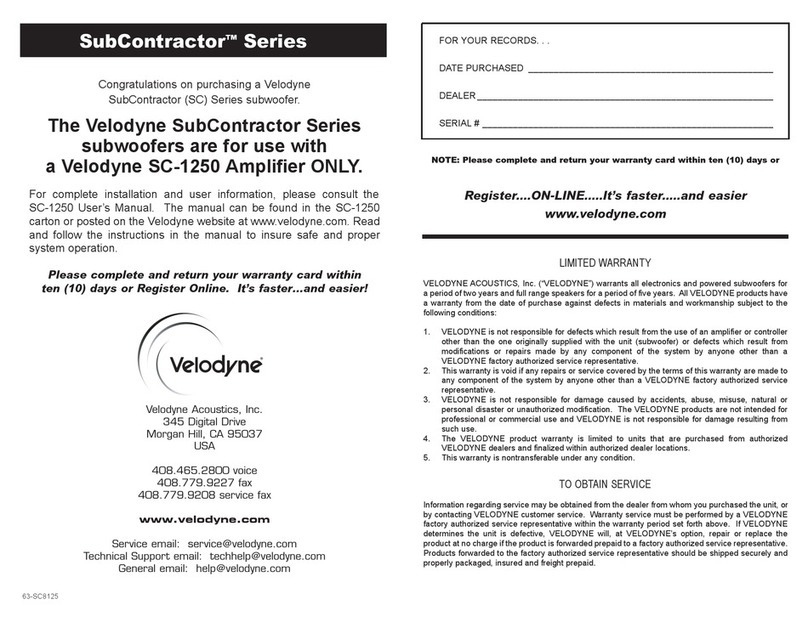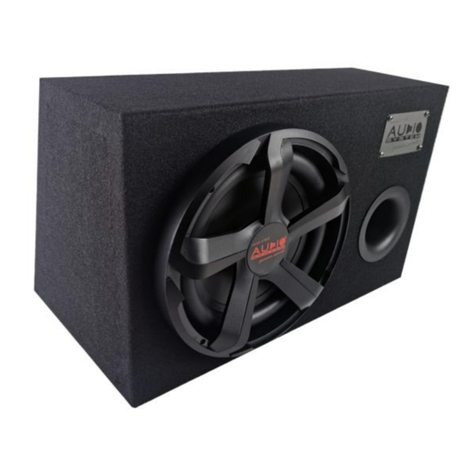
aiming to give the customer a good indication of the level of power that the speaker will be
able to cope with as a maximum value, when installed into a closed field environment (a
car!) using a suitably designed bass enclosure and running an intelligently set subsonic
filter and low pass crossover and when fed from an amplifier that is outputting clean, crisp
power (not a load of distortion!). To be clear, we are not attempting to rate for "continuous"
or "indefinite" performance - we are rating for a genuine, RMS value over the short term,
rather like what you might do to enjoy one song at absolute maximum level, or at the other
end of the spectrum if you are competing in sound pressure contests we are offering you
the "burp" RMS level. It is the system designer that is responsible for choosing equipment
that works in harmony together - speaker, enclosure, amplifier and source unit as well as
setup. There are vast differences in the fil power handling of a speaker system depending
on these factors, and "raw driver" theoretical power limits are only one factor in that fil
number. Heat management is the responsibility of the system designer, therefore, and we
will not accept warranty claims for burned coils under any circumstances. A burned coil is
always because of either bad setup (distortion) or bad heat management (too much power
for too long - choose a higher subsonic filter level, a lower crossover low pass point or allow
the hardware to cool down between periods of extreme load.) Lets face it, we all want to
run with a 10Hz subsonic in a massive enclosure and do huge numbers easily but that's not
possible in every case. You have to set expectations accordingly. A race engine might last 2
hours at the absolute maximum level of performance it is capable of. The same engine
running a lower state of tune might last many thousands of miles on the road. That's the
same engine in a different situation with different setup. Our speakers are no different than
this and the longevity will vary in a similar way depending on how close to their thermal
and mechanical limits they are run.
The first consideration is enclosure design. This is a complicated and technical subject. You
can use our recommended box design where we quote one, or approach your distributor for
advice. Please do not guess the box size as it is a very important part of your success with
the product. For the construction of the enclosure we recommend the use of MDF or
Weather Proof Ply Board (WBP) in 18mm thickness as a minimum. Do not construct bass
boxes from chip board. Improved performance will result from thicker box material - either
25mm or even laminations of thinner material are common methods for improving box
rigidity. Corner bracing is popular and works well, as do internal braces between walls.
Don't forget to take account of the volume of any inner bracing when you are optimising
the box size. When we are designing boxes we always allow an additional small amount
(say 0.25 cubic feet or a few litres) of extra space so that we can tune the box accurately
afterwards. You can't add space after but you can fill it with bracing and resin or other
objects to reduce it! On the larger subwoofers it is essential to make the baffle (the side of
the box where the woofer is affixed) from a double layer of 18mm MDF as a minimum. This
reduces box interference greatly and is proven to be a worthwhile exercise. DO NOT use
screws to fasten your subwoofer into the box. It works but they strip easily, can come
undone and do not offer professional repeatability in respect of service work to the
enclosure or speaker. We offer our BFTNUT.1 kit which has ten 60mm long high grade M5
bolts with matching T nuts as an excellent way of retaining your woofer to the enclosure.
Also take note that should you carpet the enclosure you will need to cut the carpet carefully
around the woofer. Do NOT bolt the woofer to carpet as it is porous and could affect the box
parameters.
When running more than one woofer in a mono configuration we recommend that you
share enclosure space and keep the speakers as close together as possible in the baffle.
This tends to do the most effective job of allowing the speakers to act as a single piston,
moving the optimum amount of air. Do note well that should you decide to operate stereo
